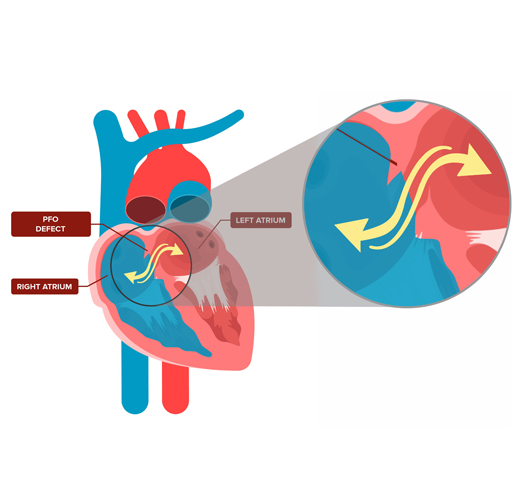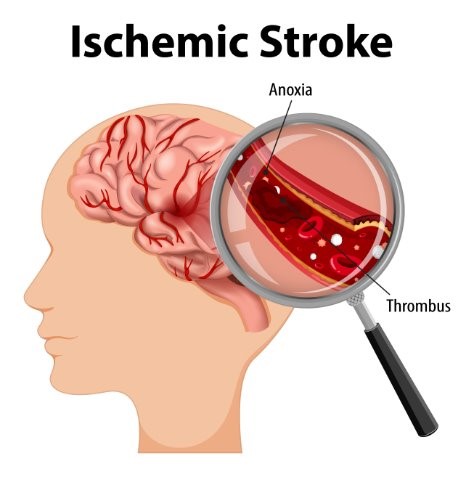-
Products
-
- Featured Products
- Supraflex Cruz
-
- Professionals
- Patients & Caregivers
- About SMT
Main navigation
What are the symptoms?
Most patients with a PFO do not experience any symptoms. They may go through childhood and adulthood with an undetected PFO.

Blood clots in the veins of the body may travel from right atrium to the left atrium through the PFO. These blood clots may travel to the brain and block the blood flow in the blood vessels in the brain. The cells in the brain will not receive oxygen and cause death of these cells. This is when stroke occurs.

During foetal development, this flap-like opening allows blood to bypass the lungs by allowing blood to flow from the right atrium to the left atrium. This occurs because at this stage of foetal development, the lungs are still underdeveloped. However, when the baby is born, the lungs become fully developed and functional and there is no longer need for this opening.
During an echocardiography test, a small amount of a salt solution with bubbles is injected into the arm of the patient. If the bubbles pass from the right side of the heart to the left side of the heart it means a PFO is present. If the bubbles do not pass from the right side to the left side, it means there is no PFO present. This test is specific for the diagnosis of a PFO.
- Surgery
- Transcatheter device closure


